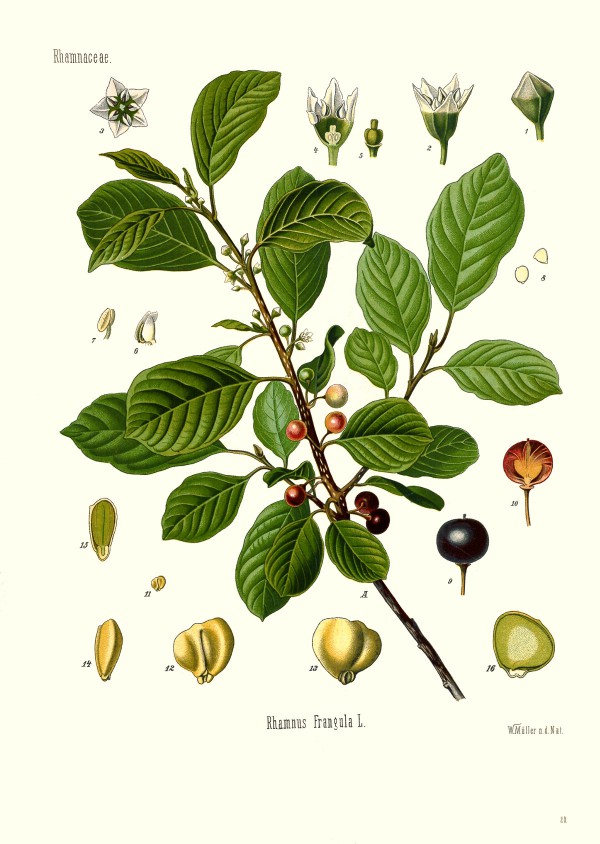Frangula alnus Mill. - syn.Rhamnus frangula L. - Rhamnaceae
alder buckthorn, glossy buckthorn, Faulbaum, Pulverholz
Deciduous shrub or small tree, native to Europe, Sibiria, Central Asia, Northwest Africa, naturalized in North America.
„The bark (and to a lesser extent the fruit) has been used as a laxative, due to its 3 - 7% anthraquinone content. Bark for medicinal use is dried and stored for a year before use, as fresh bark is violently purgative; even dried bark can be dangerous if taken in excess.“ http://en.wikipedia.org/wiki/Rhamnus_frangula
The unpleasant smelling (german name „Faulbaum“, rotting tree) wood brakes easily, hence the latin name „Frangula“ from „frangere“ = to brake. In spring the bark is most readily seperated from the twigs and then air-dried during one year or heated for some hours to convert anthrones to anthraquinones. The dried bark contains up to 8% of 1,8-antraquinones mostly glycosidically bound. Important compounds are glucofrangulines A and B, as well as the frangulines A and B (during storage increasingly emerging), all of which derived from the same aglycon, frangulaemodin. There are also small amounts of chrysophanol, physcion and dianthrones as glycosides.
[Kommentar zum DAB 10, 3.NT 1994, 1996, F 5]

Frangula alnus as Rhamnus frangula, Köhler, F.E., Medizinal Pflanzen, vol.1 t.20 (1887) [W.Müller]
http://botanicalillustrations.org/species.php?id_species=443414
Frangula alnus, Wien - Donauinsel © Rolf Marschner (2007) http://botanische-spaziergaenge.at/viewtopic.php?f=421&t=1339
